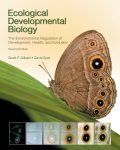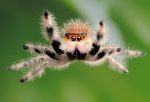Today is my actual first day of classes. We had MLK Day off, and I have no classes on Tuesday, and today I get to meet the 12 students in my Ecological Developmental Biology course. It should be fun. I plan to present that famous aphorism by Van Valen, “Evolution is the control of development by ecology,” and then I’m done for the entire semester — once they’ve grasped that, there is nothing else left to teach, so we can just coast through February, March, April, and May.
 OK, so maybe we should also think about the details. We’re going to spend the first two weeks diving into Lewontin’s The Triple Helix: Gene, Organism, and Environment. It’s short but clears the stage beautifully of any vestige of genetic determinism and primes us with an introduction to some fundamental concepts. Everyone ought to read it!
OK, so maybe we should also think about the details. We’re going to spend the first two weeks diving into Lewontin’s The Triple Helix: Gene, Organism, and Environment. It’s short but clears the stage beautifully of any vestige of genetic determinism and primes us with an introduction to some fundamental concepts. Everyone ought to read it!
The rest of the semester we’ll work through Gilbert and Epel’s Ecological Developmental Biology. We’re going to talk about plasticity, epigenetics, symbiosis, developmental physiology, and the book has lots of material on teratogenesis, cancer, and aging (those are all developmental concerns, you know — we’re doing all the interesting and important stuff).
We’re also going to dig into the primary literature. This week, we’re reading a review by Sultan, “Development in context: the timely
emergence of eco-devo” to get everyone filled in with the background, but subsequent weeks will be mainly about primary research papers. There’s going to be a fair amount of reading in this class!
I’ve also made the radical decision to abolish all exams: about 60% of the grade is derived from just showing up, alert and ready to contribute. We’ll see how well that flies.
I’ll let you know. I’m thinking I’ll try to post a weekly wrap-up here, so that if I fail it’ll be visible.










